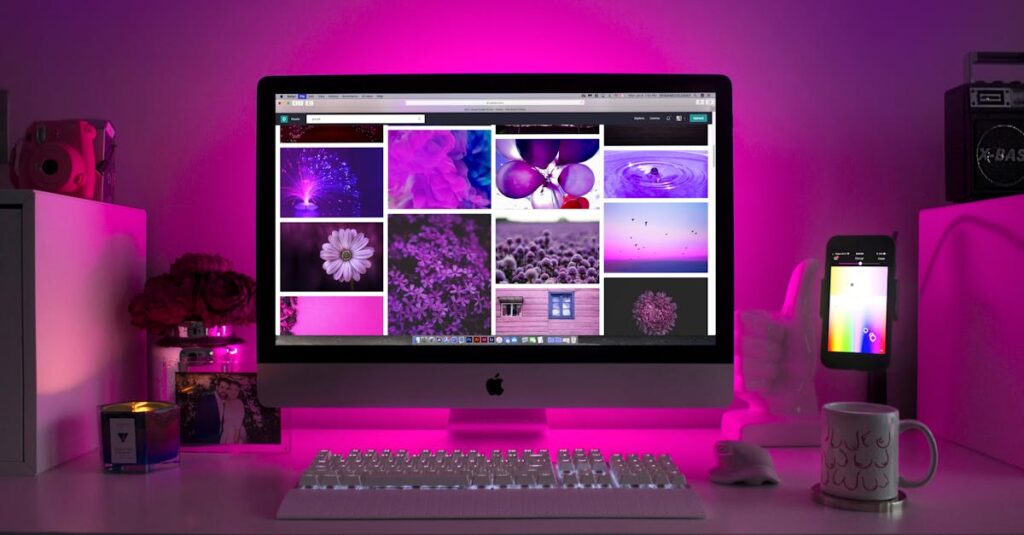Creating an environment conducive to productivity is more important now than ever, especially for those who spend hours in front of screens. The challenges faced by individuals may include strained eyes, poor posture, and lack of focus. Therefore, it becomes essential to craft a screen-friendly workspace that mitigates these issues. This article will guide you through the steps needed to develop an optimal workspace, ensuring that both your comfort and productivity thrive.
Prerequisites
Before diving into the process of creating a screen-friendly workspace, there are a few prerequisites that you should consider. Identifying your personal needs and understanding the typical tasks you’ll perform are critical first steps. Whether you’re a content creator, a software developer, or someone engaged in remote work, knowing your specific requirements will substantially impact the effectiveness of your workspace setup.
Evaluate available resources, including furniture, tech devices, and lighting fixtures. A modestly equipped room can still be transformed into a highly effective workspace with the right approach and mindset.
Step-by-Step Process
Assess Your Current Workspace
Start by examining your current workspace. Are you working on a desk that’s cluttered? Is your chair comfortable, and does it provide adequate support? Take note of what works and what creates barriers to your productivity. Consider answering a few questions: Do you oftentimes find yourself straining your eyes? Are there frequent distractions around you? Documenting these challenges will give you a clearer picture of what improvements are necessary.
Choose the Right Monitor
The monitor you choose can make a significant difference in your screen-time experience. Look for a monitor with a high resolution to reduce pixelation, which can contribute to eye strain. Larger screens can also be beneficial for multitasking, allowing you to have several applications open simultaneously. Furthermore, consider monitors that come equipped with blue light filters. Studies have shown that excessive exposure to blue light can disrupt sleep patterns and lead to digital eye strain.
Optimize Screen Positioning
Once you’ve chosen the right monitor, the next step is ensuring that it’s positioned correctly. Ideally, the top of the screen should be at or just below eye level. This positioning helps keep your neck in a neutral position and reduces the likelihood of strain. The screen should be about an arm’s length away to minimize the risk of eye discomfort. Using a monitor stand or adjusting the height of your chair can help achieve the optimal setup.
Adjust Lighting Conditions
Lighting plays a crucial role in creating a screen-friendly workspace. Natural light is ideal, but if that’s not available, consider using adjustable desk lamps. Soft, warm lighting can alleviate glare and reduce strain on your eyes. Position your monitor to reduce reflections from windows or lights, opting for anti-glare screens if necessary. A well-lit environment not only aids in reducing eye strain but also enhances your overall mood and productivity.
Consider Ergonomics
Ergonomics is vital when it comes to preventing discomfort and injuries. Your chair should offer adequate support, ideally allowing for adjustments in height and lumbar support. Your feet should rest flat on the floor, and your arms should rest comfortably on the desk. Don’t underestimate the importance of a keyboard and mouse placement; ensuring they are at a comfortable height will help you maintain good posture while typing. Small investments in ergonomic equipment can significantly increase your long-term comfort.
Implement Breaks and Eye Care
Sustaining focus for long periods can lead to fatigue, making breaks essential. Incorporate the 20-20-20 rule: every 20 minutes, take a 20-second break to look at something 20 feet away. This practice helps relieve eye strain and refreshes your focus. Additionally, make a habit of standing up, stretching, or even taking a short walk during longer work sessions. Your body and mind will thank you for it, and your productivity may increase as a result.
Tips
To further enhance your screen-friendly workspace, consider these additional tips:
- Personalize Your Space: Use pictures, plants, or organizational tools that make your workspace inviting and personal.
- Minimize Distractions: Use noise-canceling headphones or ambient background music to create a more focused environment.
- Use Technology Wisely: Consider apps that remind you to take breaks and adjust screen brightness based on ambient light.
- Stay Hydrated: Keep a water bottle at your desk to remind yourself to drink enough water throughout the day.
Final Thoughts
Crafting a screen-friendly workspace is a vital investment in your health and productivity. By understanding your needs, assessing your current setup, and making informed choices about equipment, lighting, and ergonomics, you can create an environment that promotes well-being and efficiency. Embracing the proper practices not only reduces discomfort but also enhances your ability to focus on the task at hand. Making these adjustments could be the key to unlocking your full productivity potential, and with the right approach, you’ll find that your workspace can become not just a place of work, but a sanctuary for creativity and focus.

